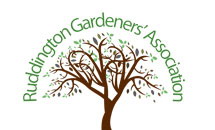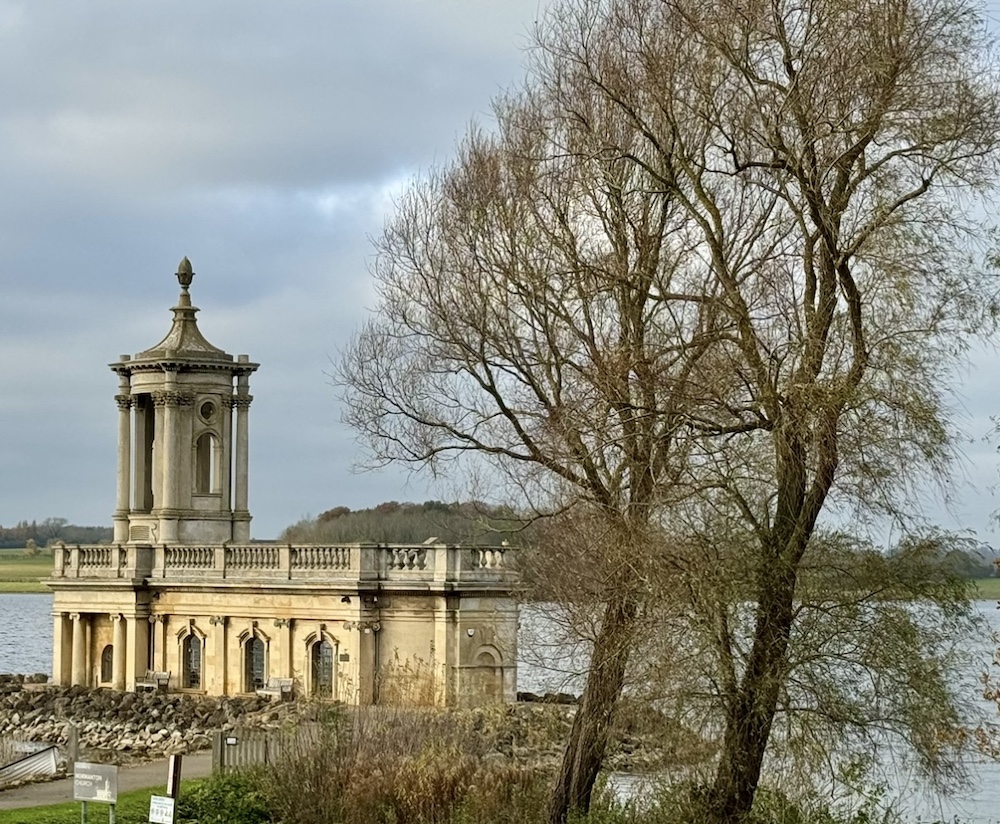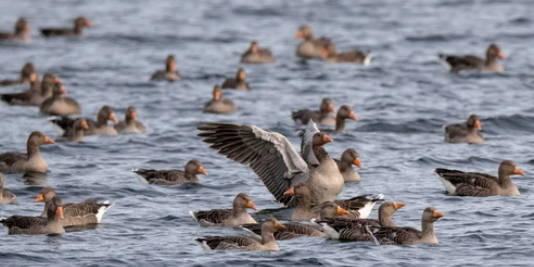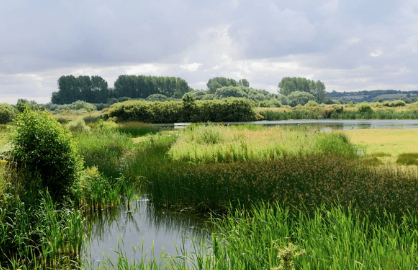A Year at Rutland Water, by Tim Sexton
Senior species and recording officer Tim Sexton from Leicestershire and Rutland Wildlife Trust spoke enthusiastically on October 30th 2024 about the wildlife, flora and fauna at the 3,000-acre Rutland Water.
Leicestershire and Rutland Wildlife Trust maintain the site on behalf of Anglian Water which produces drinking water for much of the Midlands.
As Tim explained, Rutland may be the smallest county in the country but the value of the ecology of this Site of Special Scientific Interest (SSSI) to the region and the UK is huge.
Volunteers at Rutland Water number 100 and their tasks range from monitoring osprey, water voles and beetles to muddy jobs such as cutting down reed beds.
The reservoir was built in 1976, drowning two villages, and is the largest one in the UK by surface area.
It is a 17-mile walk around the lake and Tim keeps taxi details in case he meets “stranded” visitors who do not realise the distances!
Tim revealed that Rutland Water is so extensive that birds flying over The Wash can see it in the distance and head over to feed.
Some 21,000 ducks have been recorded, including 1,200 gadwalls and 700 shovellers, on the mosaic of lagoons and smaller ponds.
Great crested grebes number 1,300 and the great white egrets numbers are increasing due to the milder climate.
Wetland bird counts are carried out once a month and the numbers reach 5.5 million. Pochard numbers are down to eight this year which may in part be due to the North American mink killing them on their breeding grounds in Scandinavia.
Volunteers also look after ancient woodland, wildflowers meadows and 35 bird hides.
Winter is the season for tree management where the woodland floor is opened up, helped by Hebridean sheep and Dexter cattle.
The artificial nesting sites built in the 1990s, where sand martins nest (this year they had 600 birds) need a clear-out, a smelly job which calls for white protective suits to keep out the fleas!
This year volunteers counted 1,500 chicks. The 20 to 30ft osprey platform needs cleaning out too, a hazardous job on a windy day!
Nest boxes are also tidied; there are 300 small-holed ones, plus barn owl and duck boxes.
In the spring ringing birds, like the sand martins, tawny owls and kestrels, is carried out.
In 2024, 12 avocet nests producing 30 chicks. The surprise of the year was a dunnock spotted feeding a young cuckoo, the female cuckoo having laid her egg in the dunnock’s nest after removing the resident eggs.
Summer means monitoring of the wildflower and ancient hay meadows with 100 bee orchids appearing in 2024.
Beetles and bees are valuable pollinators and there have been 25 species of butterflies with 750 species of moth, having been recorded in the last 50 years.
One Pipistrel bat was recorded travelling all the way to St Petersburg. In the autumn, 134 species of fungi were recorded in just two hours, and only the second recorded example of the smallest beetle in the UK at 0.1mm in length.
It was a pleasure to hear about the success of the site and the sheer scale of the wildlife, trees and plants which have developed in the 50 years since the reservoir has been established. Rutland has a Latin motto ‘multum in parvo‘ which means ‘much in little’. Tim proved there is plenty to delight visitors all the year round at Rutland Water.



